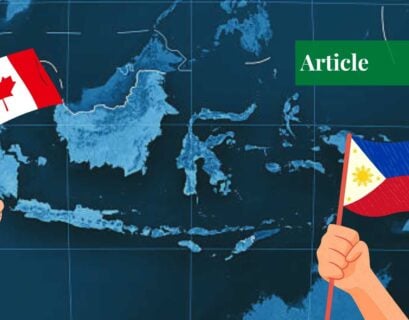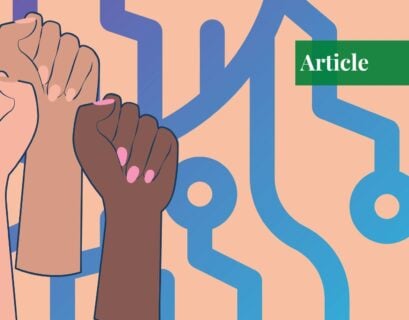Hafsa Ammar is a graduate of the National Defence University, Islamabad. Her areas of expertise are narrative building and propaganda warfare, centered around the Soviet Union and modern-day Russia.
The concept of alternative dispute resolution (ADR) on its own is unique due to its malleable nature, as it exists in various forms in the Philippines depending on the case and context. Tribal leaders, community elders, and family courts are all different instruments for the same notion—justice.
Department of Agrarian Reforms
The Department of Agrarian Reforms, also known popularly as ‘DAR’, is an organization made for the redistribution of agricultural land in the Philippines. Many local conflicts which take place within communities or inside families are in regard to land ownership. This institution was formulated in 1971 to deal with such issues in a constructive manner, in hopes of establishing societal peace.
The department has recently helped over 30 farmers (including former rebels) in obtaining their own pieces of land for agricultural development. DAR holds training and workshops for local youth. Its ‘Agro-Enterprise Development Program’ churns out a hundred people trained in facilitation skills. Such initiatives are a direct remedy towards structural violence and help enable positive peace.
“Providing land to the landless gives these former rebels the opportunity to livelihood, which is DAR’s contribution to end local communist armed conflict, a whole-of-nation approach to address insurgency in our country” —Reform Officer Maximo Castaneda Jr.
Philippine Mediation Centers (PMC)
Set up by the Philippines Judicial Academy, the PMCOs (Philippine Mediation Center Offices) are set up all over the state to provide quick and easy justice in a variety of socio-cultural practices. They were installed for the initial purpose of reducing the workload on state courts. However, they gained popularity once community-centric mediation practices started to efficiently end conflicts.
PMC is responsible for overlooking the following ADR outfits working in the country:
- Court Annexed Mediation (CAM)
Court-annexed mediation is a dispute resolution mechanism where the parties enter into mediation voluntarily. The mediator appointed to their case is certified by the state supreme court.
- Appellate Court Mediation (ACM)
Appellate court mediation is an informal practice held by the court of appeals. The third-party mediator is selected by the Court, similar to CAM.
- Judicial Dispute Resolution
Judicial dispute resolution involves more ADR mechanisms, administered by the Judge, such as conciliation. Often conducted before official trials take place to assess the necessity of trial and severity of the issue.
- Court Annexed Arbitration
Court-Annexed arbitration is an unconventional form of arbitration. It is the mechanism of dealing with cases already on the court docket without the judge and jury.
Katarungang Pambarangay/Barangay System
In the true nature of ADR, Katarungang Pambarangay also known as the Barangay Justice System (BJS) is a locally designed, led, owned, and implemented initiative. This alternative dispute resolution mechanism is making great strides in aiding local peacebuilding in the Philppines. The community steps up for quick and thorough justice through proactive leadership and societal emancipation. The system works as a bridge between the government and the people.
The main purpose of these additional community courts is the same as that for PMCOs: lessening the burden on state courts. The BJS is described as a compulsory mediation process at the village level. Its functioning includes offering up a location for conflicting parties to meet and resolve differences in a consensual manner and avoiding underhanded tactics and potential feuds.
The system is not there to offer up solutions or dictate conditions for party interactions, rather it means to aid the conflicting actors in addressing the root causes and resolving the issue. Instead of judges, there are community leaders present for conciliation. It is a domestic concept and does not extend its services to MNCs and other massive entities.
A personal touch is necessary for the system. Any type of conflict can be addressed including but not limited to interpersonal disagreements, land disputes, petty crime, theft, and even death – accidental or otherwise.
Datu and Bae
A Datu or Bae refers to the chief or tribal leader of a community. They are in charge of the general well-being of their communities/tribes and are often called upon for mediation or conciliation services as they have both the respect of the people and the authority to preside over mock courts and ADR initiatives.
They can also involve the Umalohokan in resolving the issue. An umalohokan is essentially the ‘town crier’. He is responsible for informing the community about community issues and proposed solutions by the Datu. They are trusted sources of information and therefore aid in ADRs.
Before a conflict is brought to a Datu, it is first analyzed to see whether it requires supervision from the tribe chief or could be solved without. This analysis is known as Kakap. It looks into conflict actors, their interests, needs, and demands. The issue is evaluated by a third party so as to not let the outcome be swayed by personal bias.
When the evaluation is complete, the problem is brought to the chief who first attempts to talk to the parties individually to assess their positions, and then finally the conflicting actors are brought together to resolve the issue.
Case Study: The Manobo Tribe
The Manobo are one of the 110 ethnic groups which reside in the Philippines. Under them are several tribes such as the Agusan Manobo, Sarangi Manobo, Obo Manobo, etcetera. The Manobo people are known for remaining close and true to their cultural roots; almost all their practices, from medicine to conflict resolution. The Manobo actively work for the maintenance of societal peace. This had led to them having an active role in local peacebuilding via various development programs regarding environmental recovery, human rights, and public policy.
The Manobo tribes have a sense of brotherhood and cooperate along the lines of kinship and duty, however, there are always small conflicts, as is natural. Their trifles include land disputes, but some have escalated to killings as well like the 2018 Manobo-Maranao case.
Their method of conflict resolution includes crossing over territory lines after surrendering any arms. The opposition welcomes the alleged offender with an intention to forgive and move on. The culprit—in whichever situation calls for it—pays for the damages and both tribes agree to move on from the conflict with no residual grudges.
Benefits
Such councils and community-based institutions are not only helpful in lowering the burden on the national judicial system but they are also active proponents of local peacebuilding. Filipino society has a marvelously well-developed alternative court system. They have led to sustainable positive peace within every aspect of society, ranging from the reduction of crime rate to empowering women to come forward about their harsh realities and suffering.
These not only promote the preservation of traditional cultures and practices but also promote a safe manner of performing such ritualistic methods of conflict resolution. Community courts are often mandated by legal offices to give conflicts a chance to resolve through conciliatory methods. Transformative mediation shines through many of the peace processes mentioned above for their main aims are not just limited to problem-solving rather they involve a transformation of the relationship between the conflicting parties/tribes as well.
Emotional displays are encouraged and considered cathartic. The past and present grievances are discussed, negotiated on, and then finally put to rest. Livelihood, skill training, rehabilitation, and reintegration programs all work in tandem with ADR practices.
Conclusion
The mechanisms and institutions mentioned above are locally led, owned, and implemented systems of justice. The grassroots approach has always proved successful due to its integrative nature. People trust their elderly more than they do their leaders due to the relational/communal aspect. It is this very trust which tethers justice and obedience together.
The Filipinos place great importance on communal cooperation and harmony. The alternative dispute resolution mechanisms in the Philippines are effective and efficient due to the trust established between the people and their leaders—governmental and tribal. ADR is a two-way street; it will only result in favorable outcomes when both parties go in with the predetermined intention of justice instead of bias and self-righteousness.
They are prime examples of local peacebuilding initiatives that bring awareness into the community regarding the cost and consequences of conflict. When a community approaches a conflict to resolve it rather than a party approaching a conflict to win, it strengthens the social fabric of the society. The various systems set up by both the government and tribal leadership of the Philippines have seen massive success in reducing conflict and establishing positive peace.
If you want to submit your articles and/or research papers, please check the Submissions page.
The views and opinions expressed in this article/paper are the author’s own and do not necessarily reflect the editorial position of Paradigm Shift.
















